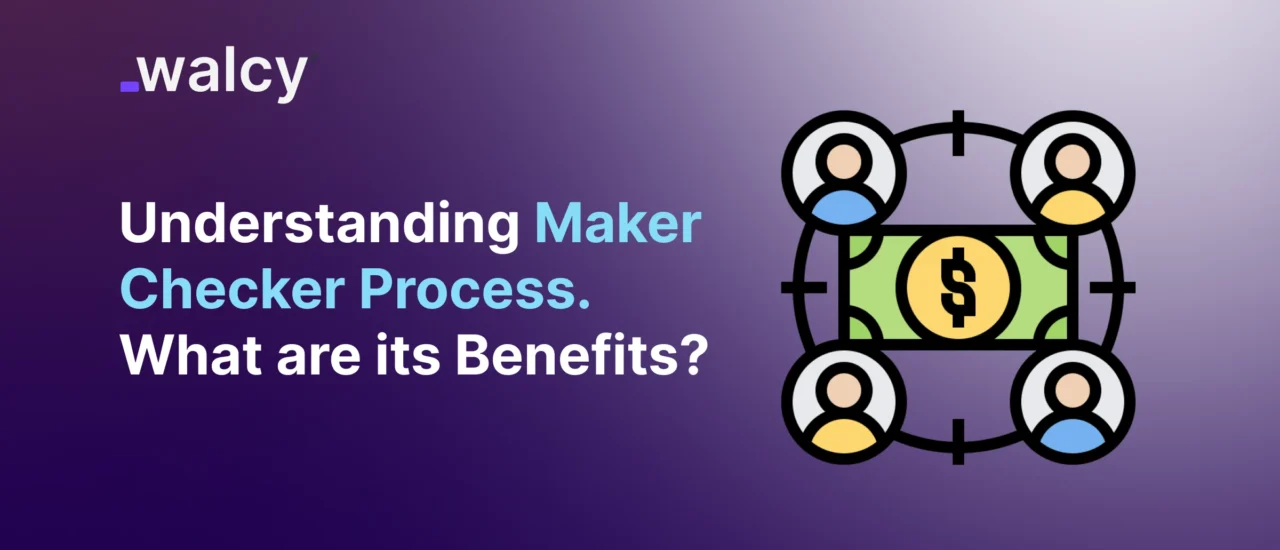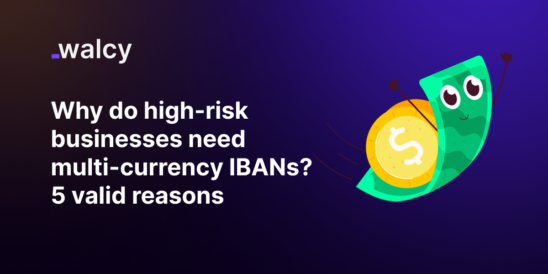In this fast-paced and highly regulated business world, organizations have to ensure that internal controls are robust enough to avoid errors, fraud, and operational inefficiencies.
Among the different ways to accomplish such strengthening of controls, one important process is known as the maker checker process.
Due to its proven effectiveness in ensuring that the transactional workflow reflects accuracy, accountability, and compliance, Maker-Checker has varied applications across all banking, finance, and accounting industries.
We will cover the Maker-Checker workflow: describe the maker checker process in banking, describe how the maker-checker approval process works, and discuss some important benefits of the maker checker process.
You will, by the end of this, have a good idea of just how this process works and why it is so important to organizational efficiency and security.
What Is the Maker Checker Process?
The Maker Checker process is among the various internal controls developed to ensure that errors, fraud, and unauthorized transactions are kept at levels as close to a minimum as possible through the division of labor in different roles in a process.
This is a work process whereby an actor, or maker, initiates or acts that another actor, the checker, reviews and verifies for correctness before action finalization or execution.
The segregation of duties due to work division helps in increasing the accuracy and validity of business transactions.
For example, the maker in a banking environment would start an action, such as requesting a wire transfer, while the checker would check the appropriateness and compliance with internal policies, followed by the approval of that transaction.
It is only at this point that the transaction will be approved by the checker and thus allowed to occur.
Key Components of the Maker Checker Process
The maker-checker process can be summarized into three key components:
- Maker: The maker is the individual who originates or performs a task. This could involve creating, entering, or preparing a document, transaction, or request on a system. Makers have limited privileges and are unable to execute any jobs without approval first.
- Checker: Concomitantly, the checker contemplates and checks on the action/request of the maker. The checker verifies that the job done is rightly executed with adherence to all policies and regulations, besides matching the pre-set parameters. In nearly all instances, the checker enjoys a higher privilege than the maker, since they are called upon to verify and approve the whole process before closure.
- Approval: The checker goes through the task in detail and then approves or rejects it. Some systems may also require several checkers to facilitate added verification to help verify high-value transactions. Only upon approval of the maker’s request by the checker does the request move to actual execution.
Maker-Checker Process in Banking
Maker-Checker is very crucial in banking because of the volume of money transactions and complete compliance with regulatory frameworks.
Banks have to ensure that every transaction, ranging from wire transfers to loan approvals, is accurate, and valid, and further complies with AML and KYC policies.
Read about: What Are The Penalties For Money Laundering? Quick Facts
Examples of the Maker-Checker process in banking:
Wire Transfers:
A maker-much like a customer service representative a request for a wire transfer via the self-service Web portal. Then, a checker (senior staff) reviews the transaction details for the legitimacy of the transfer, including the beneficiary’s account number, transfer amount, and source of funds.
Credit Approvals:
The maker can make an application for a loan in the system, and the checker primarily verifies the creditworthiness of the applicant, collaterals, and other financial information. Yes or no to the loan approval.
Customer On-boarding:
Sometimes, for instance, the maker performs the initial setup while the checker verifies the customer’s identity and ensures adherence to KYC regulations before account activation.
This, in turn, helps in preventing unauthorized or incorrect transactions that could lead to great financial loss or regulatory penalties.
You shall love: Charges For Wire Transfer From India To Canada.
Maker-Checker Approval Process
The maker-checker approval process ensures that every transaction and activity within the organization is scrutinized for correctness and compliance before they are finalized.
It is, therefore, very important to ensure that there is integrity in the processes of the business and that accountability is accounted for. The general steps of the maker-checker approval process are as follows:
- Originator: The originator initiates an activity, like adding/updating to or from a system database, initiating a transaction, wire transfer, making a payment, or even a loan request.
- Checker: Thereafter, the checker checks an activity that has been already carried out by the originator. This might include cross-validation of input data entered by the originator with the support document, confirming the correctness of data, ensuring the endorsement of regulations, and verifying if the transaction is appropriate and valid.
- Approval/Rejection: A transaction is gone through by the checker, who makes his decision regarding its approval or rejection. If the checker approves the transaction, it goes for further processing, which may include execution or finalization. In case the transaction gets rejected by the checker, the maker is usually asked to rectify the issues or provide more information.
- Execution: After some workflows approve the transaction of the maker, he will execute it, for instance, transferring the money to an account or paying by cheque. While in other systems and organizational setups, the checker could be executed.
Advantages of Maker-Checker Process
The benefits accruing from a maker-checker process are many, and the process is an indispensable tool for any organization seeking improvement in operational efficiency with reduced risks of noncompliance against regulatory standards.
Let’s look into some key advantages of maker-checker processes:
- Error Reduction
The maker-checker process has several advantages, of which the most important is that it minimizes errors.
When only one person executes a task or transaction, there are chances that any mistake they commit will be overlooked by another.
Having the same transaction or task checked by another person greatly reduces human error.
For instance, at the time of recording data, the maker might insert incorrect data or omit some necessary information that can easily be pointed out by the checker and thus save the company from potential losses or issues.
- Prevention of Fraud
Another critical advantage of the maker-checker workflow is fraud prevention.
Because the checker is always supposed to check and validate the actions of the maker, there is almost a checks-and-balances situation that reduces the possibility of fraudulent activities.
In sensitive areas of operation, like financial transactions or account management, segregation of duties makes it very hard for people to manipulate data in their favor or conduct unauthorized activities without being found out.
Read about: International Payment Fraud: Ultimate Guide For Businesses.
- Greater Accountability
With the maker-checker system, individuals are made accountable by the system. Makers have the responsibility of initiating, while checkers have full responsibility for reviewing and approving.
This clearer division of responsibilities enhances transparency, with individuals being more likely to follow the established processes and procedures.
It also provides an audit trail since each of the actions taken by the maker and checker can be logged and tracked for accountability purposes.
- Improved Compliance
Adherence to various local and international regulations in banking and financial industries is of the essence.
The maker-checker concept ensures that organizations in multi-transactions ensure there is adherence to relevant regulations, such as AML, FATCA, and other various financial regulations.
The system helps organizations keep on the right side of the law to avoid fines and costly penalties since a second person is involved in checking.
Read more about: Best Multicurrency Account: What Is It And How It Works?
- Workflow Smoothening
The maker-checker process, though involving additional checks, is an essential step that helps in smoothing the flow by trying to catch errors early that would otherwise lead to rework or corrections at a later stage.
This will lead to greater efficiency and enable the organizations to free resources toward tasks that truly create value and stay away from avoidable issues because of unchecked mistakes.
- Risk Mitigation
By requiring two-factor authorization or approval, the maker-checker system eliminates all forms of risks associated with business operations; particularly in high-value activities like monetary transaction operations.
It acts as an early warning mechanism whereby it gives warnings before matters spiral out of control. The mechanism is also useful during operation risk management because it ensures that no unauthorized activity is carried out.
Read about: What are Operating and Non-Operating Expenses for Businesses?
- Scalability
As the organization grows in size, so does the volume of transactions and their complexity.
This process of maker-checker approval has the advantage of enabling an organization to scale up its operations without loss in controls or compliances.
The fact that very specialized roles can be defined for the makers and checkers means that organizations can apply this process to their needs, from a small team to a large, distributed workforce.
Conclusion
The Maker-Checker process is one of the most important internal controls that assure the organization benefits in terms of minimal errors, no fraud, and achievement of required compliances, thus assuring improved efficiency.
In banking, finance, and other sectors, maker-checker workflow stands necessary to guarantee accountability, accuracy, and integrity at work.
Proper understanding and implementation of this process will improve risk management, add security to transactions, and simplify the handling of high-volume operations accordingly.
The Maker-Checker concept is bound to bring trust into building operationally resilient international businesses, financial institutions, and organizations in many ways.
Read about: Expanding Business Internationally: Must Know Things
Do follow us on Facebook and LinkedIn, to stay connected with us.



